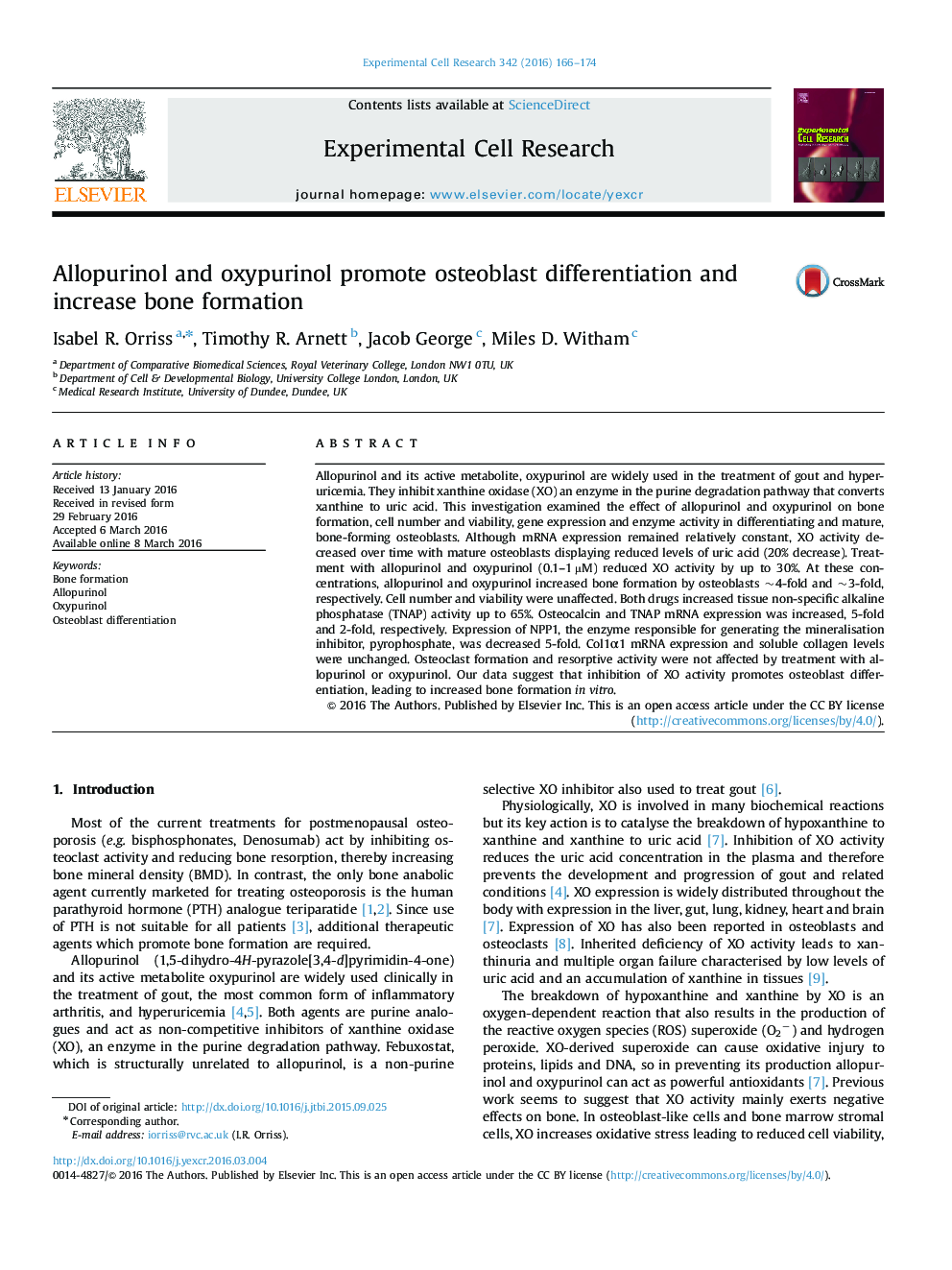| کد مقاله | کد نشریه | سال انتشار | مقاله انگلیسی | نسخه تمام متن |
|---|---|---|---|---|
| 10903726 | 1086518 | 2016 | 9 صفحه PDF | دانلود رایگان |
عنوان انگلیسی مقاله ISI
Allopurinol and oxypurinol promote osteoblast differentiation and increase bone formation
ترجمه فارسی عنوان
آلوپورینول و اکسی پورینول باعث تشدید استئوآباد می شوند و باعث افزایش استخوان می شوند
دانلود مقاله + سفارش ترجمه
دانلود مقاله ISI انگلیسی
رایگان برای ایرانیان
کلمات کلیدی
موضوعات مرتبط
علوم زیستی و بیوفناوری
بیوشیمی، ژنتیک و زیست شناسی مولکولی
تحقیقات سرطان
چکیده انگلیسی
Allopurinol and its active metabolite, oxypurinol are widely used in the treatment of gout and hyperuricemia. They inhibit xanthine oxidase (XO) an enzyme in the purine degradation pathway that converts xanthine to uric acid. This investigation examined the effect of allopurinol and oxypurinol on bone formation, cell number and viability, gene expression and enzyme activity in differentiating and mature, bone-forming osteoblasts. Although mRNA expression remained relatively constant, XO activity decreased over time with mature osteoblasts displaying reduced levels of uric acid (20% decrease). Treatment with allopurinol and oxypurinol (0.1-1 µM) reduced XO activity by up to 30%. At these concentrations, allopurinol and oxypurinol increased bone formation by osteoblasts ~4-fold and ~3-fold, respectively. Cell number and viability were unaffected. Both drugs increased tissue non-specific alkaline phosphatase (TNAP) activity up to 65%. Osteocalcin and TNAP mRNA expression was increased, 5-fold and 2-fold, respectively. Expression of NPP1, the enzyme responsible for generating the mineralisation inhibitor, pyrophosphate, was decreased 5-fold. Col1α1 mRNA expression and soluble collagen levels were unchanged. Osteoclast formation and resorptive activity were not affected by treatment with allopurinol or oxypurinol. Our data suggest that inhibition of XO activity promotes osteoblast differentiation, leading to increased bone formation in vitro.
ناشر
Database: Elsevier - ScienceDirect (ساینس دایرکت)
Journal: Experimental Cell Research - Volume 342, Issue 2, 15 March 2016, Pages 166-174
Journal: Experimental Cell Research - Volume 342, Issue 2, 15 March 2016, Pages 166-174
نویسندگان
Isabel R. Orriss, Timothy R. Arnett, Jacob George, Miles D. Witham,
